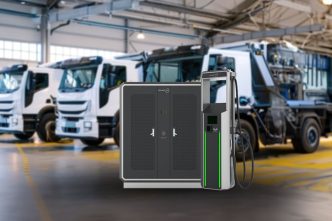SAE International has unveiled a framework aimed at enabling universal Plug & Charge functionality for electric vehicles (EVs), simplifying charging and billing processes across all public charging stations. Developed in collaboration with the US government’s Joint Office of Energy and Transportation, the framework is expected to eliminate the current fragmentation in the EV charging market, with initial tests set to commence in 2025.
The initiative is spearheaded by the SAE Industry Technologies Consortia (ITC) and its Electric Vehicle Public Key Infrastructure (EVPKI) consortium. This framework will enable secure communication between vehicles, chargers, and charging networks, fostering seamless interoperability. The EVPKI consortium comprises automakers, charging device manufacturers, charging station operators, eMobility service providers, and Public Key Infrastructure (PKI) providers. These PKI providers play a critical role by issuing digital certificates to authenticate users, devices, or services, a cornerstone of Plug & Charge technology.
Currently, the US charging landscape relies heavily on proprietary authentication and authorization methods, creating inconsistencies in user experiences. “The SAE EVPKI solution addresses these issues with a unified security system, ensuring faster and automated charging at any public station,” stated SAE EVPKI Director Tim Weisenberger. The framework is built around a Certificate Trust List (CTL), which establishes criteria for PKI providers and aims to create a competitive, interoperable PKI market tailored to the eMobility industry.
“This initiative marks a significant milestone in advancing electric mobility,” said Weisenberger, noting that the SAE EVPKI framework is designed to be scalable, flexible, and secure. The operational rollout is planned for 2025, alongside efforts to cultivate a competitive PKI vendor market to support widespread, cost-effective EV charging solutions.
Gabe Klein, Executive Director of the Joint Office of Energy and Transportation, underscored the transformative potential of universal Plug & Charge. “This advancement levels up the electric fueling experience, making it even easier than filling up with gas,” he said. “We are approaching a future where EV drivers can simply plug in, charge, and go, with the network seamlessly handling payment. It’s a critical step toward enabling bidirectional charging and true vehicle-to-grid integration.”
With this initiative, SAE International and its partners aim to streamline the EV charging process, fostering wider adoption of electric mobility and paving the way for smarter, more integrated energy and transportation systems.












